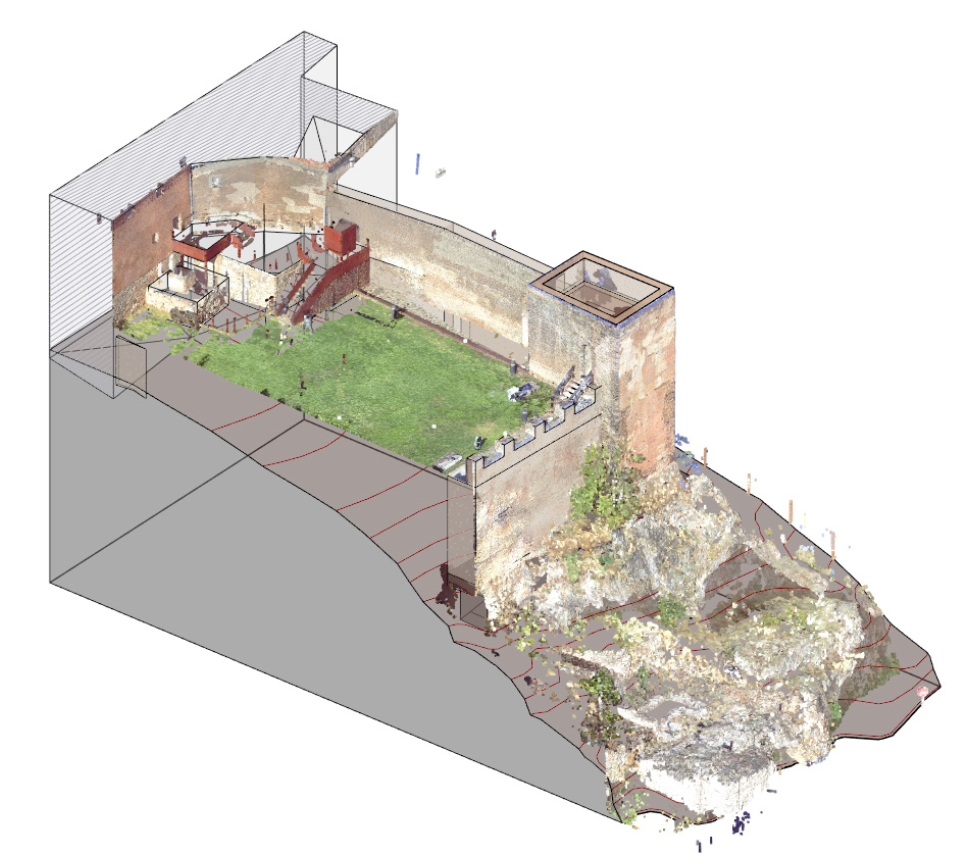
Scan To BIM is the cutting-edge process aimed at high-resolution documentation and digitalisation of buildings and infrastructures. The practical applications range from documentation and modelling of heritage assets, to modelling of industrial plants, as well as precise geometric modelling of civil engineering projects and buildings. The process starts with massive date capture using techniques that create point clouds, followed by processing the clouds to produce a geometric 3D model similar to the real item (digital twin).
The technology is based on creating models of reality (point clouds), employing photogrammetric techniques or laser scanners. For this work, the group NEXUS has:
Laser scanners:
• laser scanners (TLS) which cover all scanning ranges and precisions.
• Wearable mobile laser scanner (WMLS).
• Short-range high-accuracy scanners. Photogrammetry:
• High-resolution cameras.
• Thermal camera.
• RTK, PPK and lidar drones.
BIM software: Revit.
The main application of this methodology is the precise documentation of heritage, engineering and architecture structures, so BIM technology can then be deployed.
Advantages:
• Model quality: the point cloud mesh resolution is 2 cm. Resolutions of 1 mm are offered by the short-range scanner.
• The level of detail of the model is very high, thus enhancing the quality of the project.
• It allows huge amounts of information to be incorporated into a single model.
• Reduction in costs and time savings.

Status of the technology:
Laboratory tested
Area:
Cultural industries and tourism
Information:
To get in touch with the people in charge of this offer, please contact FUNDECYT-PCTEx by email: transferencia@fundecyt-pctex.es
